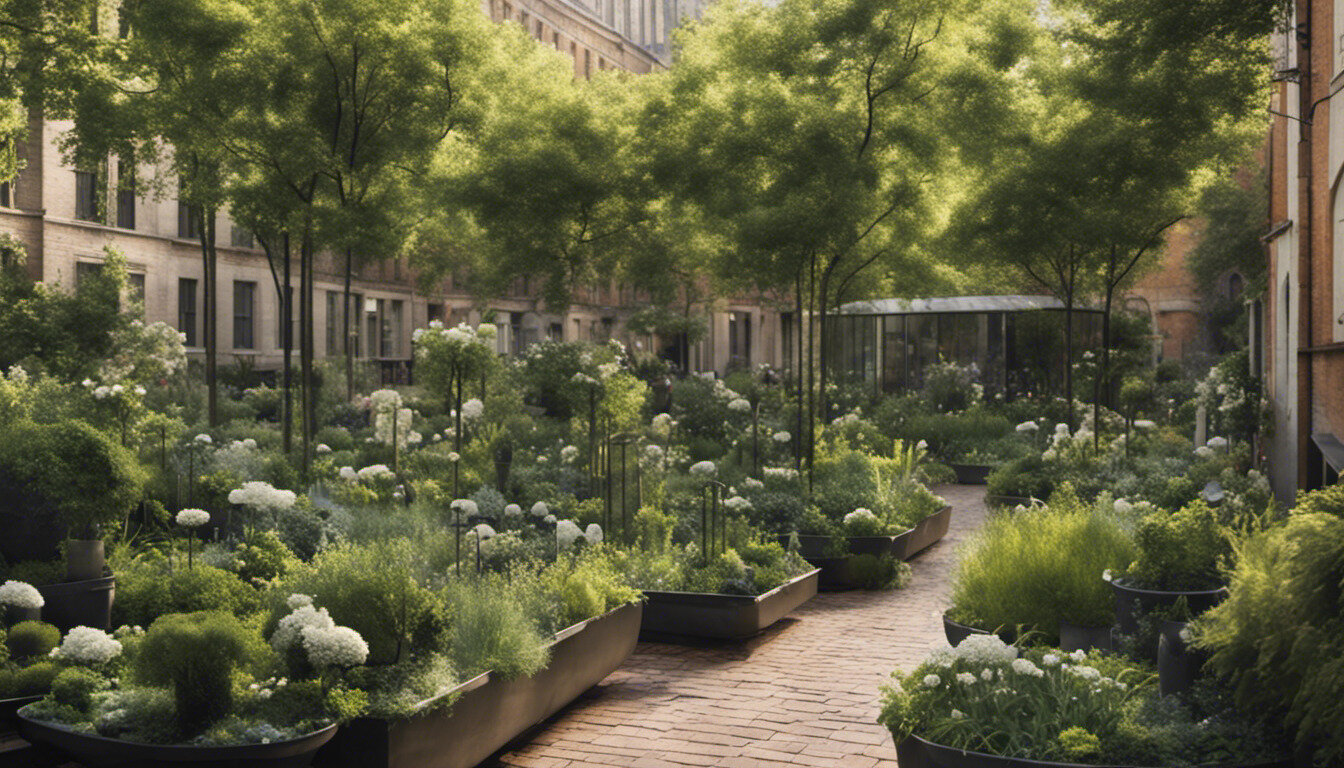The Ultimate Guide To City Blooming
The Ultimate Guide To City Blooming
Blog Article
Fascination About City Blooming
Table of ContentsThe City Blooming DiariesWhat Does City Blooming Do?How City Blooming can Save You Time, Stress, and Money.More About City BloomingAll about City Blooming
Fascinated in growing food offer for sale in the City of Chicago? Thinking of beginning an area garden? Changes to the Chicago Zoning Statute permit farming usages like community gardens and city ranches in several parts of the city. Below is a list of often asked concerns regarding the rules and laws that growers ought to take into consideration when preparing an urban agriculture project.
The zoning change does not customize any type of various other codes managing composting, structure authorizations, purchasing or renting City possessed residential or commercial property, business licenses or environmental contamination. There are existing codes that manage these issues and they stay completely impact and may be appropriate to your project. Community gardens are usually possessed or managed by public entities, civic companies or community-based organizations and preserved by volunteers.
Urban farms expand food that is planned to be offered, either on a not-for-profit or for-profit basis. Due to their business function, metropolitan farms require a business permit.
Some Ideas on City Blooming You Should Know
Composting is enabled however only for plant material that is generated and made use of on site. The quantity of compost material can not go beyond 25 cubic lawns at any kind of given time according to the criteria in 7-28-715 of the City's Municipal Code. Yes. Because the dirt at the majority of brand-new yard sites needs changing, compost, dirt, timber chips, or various other products can be obtained to build or enhance the growing room - landscaping.

If a structure authorization is needed then the hoophouse will be considered an accessory building. You can figure out more regarding the building license requirements by speaking to the Department of Structures. The 25,000-square-foot size limit is planned to prevent a single neighborhood yard from dominating an offered block or detracting from the block's existing household or business character.
The limit does not apply to yards located in Public Open Space (POS) areas. Can there be even more than one community garden that is 25,000 square feet on a single block? Secure fencing is not needed, however, gardens that have big parking locations might be required to set up secure fencing or other landscape design features.
The Basic Principles Of City Blooming
B1 & B2 areas require that all business use activities be conducted inside. R areas restrict industrial activity. The policies reflect the purpose and intent of the Zoning Code. Is fence needed for metropolitan ranches? Yes. Fencings may be required, together with landscaping and screening, for sure parking lot and outside work or storage space locations relying on location and the details task occurring.
Urban farms need structure licenses and zoning approvals prior to building and construction (sustainable gardening). Various other kinds of city click for source review may be required depending on specific frameworks, tasks, size, landscape design, licensing, public heath and stormwater management concerns.
Yes. The sort of license is figured out by what is happening at the website. The Division of Business Matters and Consumer Defense can assist determine the details kind of organization certificate that's needed. Yes. Off road vehicle parking is required for a lot of commercial projects in Chicago. The called for variety of garage is based on the variety of employees dealing with site and not the square video footage of the growing area.
The Single Strategy To Use For City Blooming

A city farm can offer compost material created on site, nevertheless, the operation has to comply with the laws in 7-28-715 of the Chicago Municipal Code. Aquaponic systems are permitted inside your home on metropolitan farms in several zoning districts.
Up to five hives or colonies of honey bees might be kept as an accessory usage. Beekeepers should register with the Illinois Division of Farming. For additional information concerning the recommended zoning amendment you may speak to the Division of Real Estate and Economic Growth, Bureau of Planning and Zoning at 312.744.8563.
, which takes place in country locations at the side of suburban areas.
Rumored Buzz on City Blooming
It can include a movement of natural cultivators, "foodies" and "locavores", who seek to form social media networks based on a shared values of nature and neighborhood holism. These networks can create by method of formal institutional assistance, becoming incorporated into regional town preparation as a "transition community" movement for sustainable city advancement.
Some of the very first proof of city agriculture comes from Mesopotamia.
Report this page